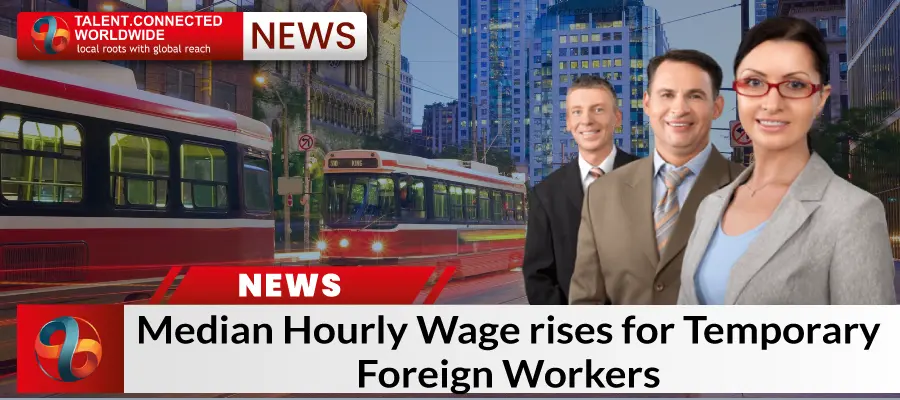
Good News! Median hourly wage rises for Temporary Foreign Workers. All provinces and territories (excluding Nunavut) will see a rise in median hourly wages after May 31st. Employers in Canada who hire foreign nationals utilize the province and territorial median hourly rate to determine the requirements for the Temporary Foreign Worker Program (TFWP).
Must Know: Canada Works to Help Newcomer Women Across the Country!
Why the Rise?
Since last year, Canada has been hiring a huge number of temporary foreign employees. The wages of employees have risen. This rise in wages is a form of bonus for the Temporary Foreign Worker Program (TFWP) employees in Canada. It will give a positive confidence to workers to do better and also fill the unavailability of temporary foreign workers.
Wages for Temporary Foreign Workers
The location of the post and the wage provided to the employee will determine whether companies must apply for a Labour Market Impact Assessment (LMIA) under the high wage or low wage stream, each with its own set of requirements.
Employees who are paid less than the provincial/territorial median wage are termed low wage, whereas those who are paid at or over the median wage are considered high wage.
| CanadianProvince/Territory | Median hourly wages (before Ma31,2023) | Median hourly wages (after May 31, 2023) |
| Alberta | $28.85 | $28.85 |
| British Columbia | $26.44 | $27.50 |
| Mantoba | $23.00 | $23.94 |
| New Brunswick | $21.79 | $23.00 |
| Newfoundland and Labrador | $24.29 | $25.00 |
| Northwest Territories | $37.30 | $38.00 |
| Nova Scotia | $22.00 | $22.97 |
| Nunavut | $36.00 | $35.90 |
| Ontario | $26.06 | $27.00 |
| Prince Edward Island | $21.63 | $22.50 |
| Quebec | $25.00 | $26.00 |
| Saskatchewan | $25.96 | $26.22 |
| Yukon | $32.00 | $35.00 |
What is the Program for Temporary Foreign Workers?
The TFWP allows Canadian firms to hire foreign nationals to fill Canadian labor shortages. Employers interested in hiring under the TFWP must complete the Labour Market Impact Assessment (LMIA) administered by the Canadian government. The LMIA assures that hiring a foreign worker will have a positive or neutral impact on the Canadian labor market.
High-Wage Worker
If you want to hire a high-wage worker, you must submit transition plans together with the LMIA to show that you are, as an employer, taking steps to lessen your reliance on foreign workers over time.
Low-Wage Worker
If you want to hire a low-wage employee, you do not need to submit a transition plan with the LMIA. Instead, the Canadian government limits the amount of low-wage workers that a company can hire in order to limit access to the TFWP.
If you are an employer who pays less than the provincial/territorial median, you must:
- Pay for the temporary foreign worker’s round-trip transportation; Ensure reasonable housing is offered
- Pay for private health insurance until employees become eligible for provincial coverage.
- The temporary foreign worker must be registered with the provincial/territorial workplace safety board.
- Provide a contract between the employer and the employee.
Must Visit: Latest BC PNP Draws: The Province Calls 202 More Candidates!






